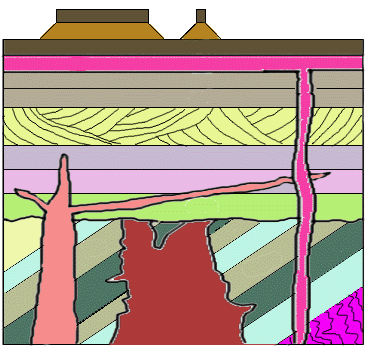
|
Most rocks are not uniform throughout. On a scale usually best measured in millimeters or centimeters, they are composed of individual mineral grains that vary in size, shape and composition. The geometric characteristics of and relationships between these small-scale rock features constitute rock texture. Rock commonly also vary on larger scales, best measured in centimeters to meters to kilometers. The individual, contrasted, larger-scale features of rocks are called 'structures'. Our task will be to see if there are rock structures that can provide clues to a rock's formational environment: whether it's igneous, sedimentary or metamorphic. There are hundreds of distinct rock structures. Geologists find it convenient to divide them into 'primary' and 'secondary' structures.
We'll examine a few of each to see what they tell us. |
